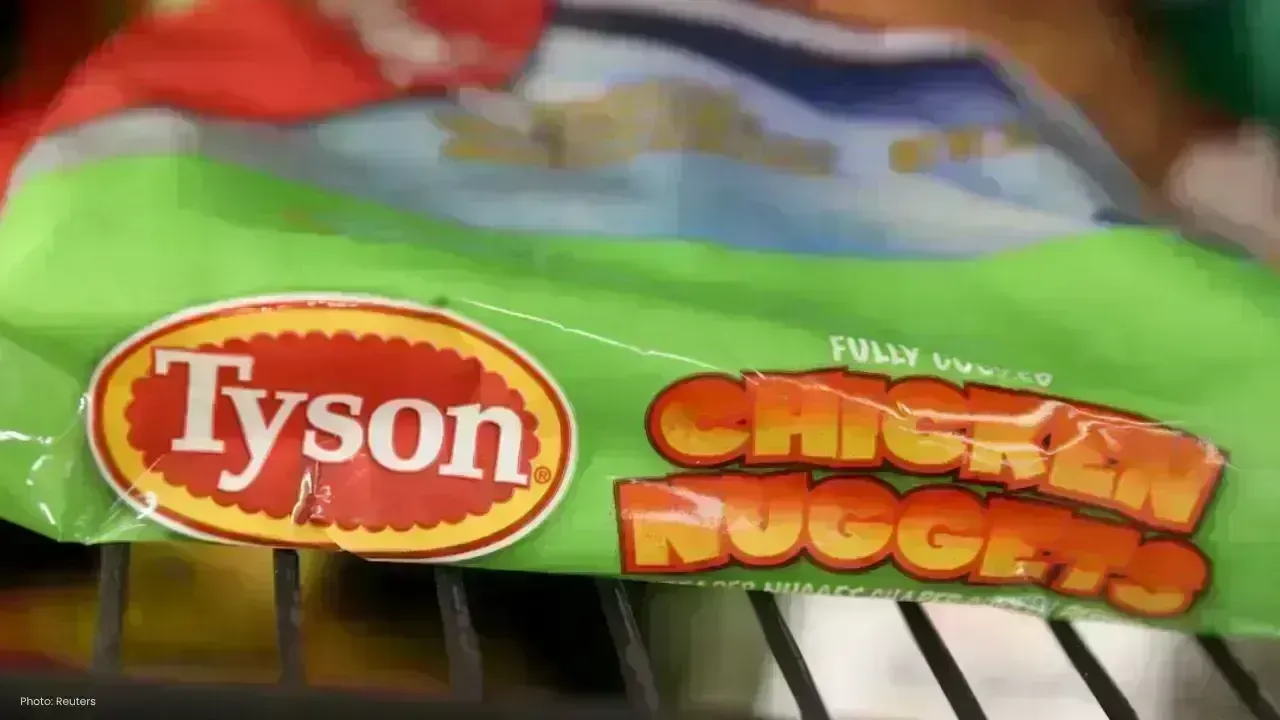
Join 10k+ people to get notified about new posts, news and tips.
Do not worry we don't spam!

Post by : Anis Farhan
For decades, Bluetooth has functioned as a key wireless standard, enabling connectivity for diverse devices such as headphones, smartwatches, speakers, and more. Recently, users have started to notice a trend: an increasing number of gadgets are no longer supporting older Bluetooth versions, particularly the outdated 2.x, 3.x, and some variants of 4.x.
Rather than generating headlines through major announcements, this change has crept in through subtle updates in product documentation, firmware adjustments, and shifts in compatibility listings. Although tech firms frame this as a natural progression, the ramifications are significant for consumers who rely on older devices, accessories, and specialized tools.
It's crucial for anyone who uses Bluetooth for everyday tasks to understand this transition and its implications.
Each Bluetooth version plays a crucial role in determining:
stability of connections
quality of audio transmission
power consumption and range
speed of data transfers
compatibility with newer devices
modern functionalities like dual audio and low-latency modes
Older Bluetooth versions were not built for today's needs, such as:
connecting to multiple devices
wireless gaming
lossless audio streaming
high-speed syncing for smartwatches
accessories for real-time navigation
wireless fitness tracking
As modern applications evolve, older versions increasingly become incompatible or ineffective.
This growing disconnect is one reason why tech companies are discontinuing support for these older standards.
Several factors contribute to this industry-wide shift in practices.
Older Bluetooth versions are prone to various vulnerabilities, including:
insecure pairing
weak encryption methods
susceptible to spoofing attempts
faulty authentication procedures
In contrast, modern Bluetooth standards support:
stronger encryption techniques
improved frequency hopping
secure pairing options
robust authentication measures
Tech companies aim to eradicate these legacy vulnerabilities to enhance user safety.
Supporting older Bluetooth standards necessitates additional components and software layers. As manufacturers move toward more efficient hardware solutions:
chipsets cease to support legacy versions
firmware no longer includes compatibility modes
device drivers are simplified
testing processes become faster
This transition results in lower manufacturing and development costs.
Bluetooth Low Energy has revolutionized the landscape by allowing:
prolonged battery life
quicker connection times
support for multiple devices
efficient communication for wearables and IoT
Older Bluetooth protocols are less energy-efficient, making their elimination critical to promoting widespread adoption of newer standards.
Recent advancements in wireless audio demand modern Bluetooth versions, especially:
Bluetooth LE Audio
LC3 codecs
multi-stream audio capabilities
broadcast audio features
These enhancements are incompatible with older Bluetooth protocols, necessitating their phase-out.
Today's devices often require concurrent connections across:
phones
laptops
earbuds
cars
wearables
smart home devices
Older Bluetooth versions struggle to manage these multi-device environments effectively.
Retaining compatibility with antiquated versions hinders innovation. By dropping older versions, companies can:
accelerate the introduction of new features
standardize devices globally
streamline customer support
minimize fragmentation
improve overall performance
This understated transition signifies a broader movement towards enhancing the Bluetooth experience.
Recent reports indicate a decline in support for:
Bluetooth 2.0/2.1
Bluetooth 3.0
early implementations of Bluetooth 4.0
outdated Bluetooth Classic modes
legacy pairing standards
Some devices once labeled as backward-compatible now offer only minimal support.
The impact of this phase-out varies by device category, with certain products facing more challenges.
Many aged audio devices utilize obsolete Bluetooth profiles. As manufacturers shift to LE Audio, these headphones and earbuds:
encounter pairing issues
often lose connection
suffer from latency
might not be recognized at all
Early-generation wearables were built on outdated protocols and now struggle to connect with modern smartphones.
Many laptop models from 5 to 10 years ago can't establish reliable connections with contemporary accessories.
Many antiquated car systems rely on old Bluetooth profiles, leading to:
failed call connections
missing audio options
limited control over media
Some older home health devices may require adapters or updated hubs for continued connectivity.
Legacy gaming controllers often experience delays or connectivity issues with newer systems.
Many users were caught off guard since tech companies made no major public announcements.
This strategy was deliberate.
Publicly terminating compatibility creates controversy. Gradual rollouts help avoid negative press.
Companies prefer advancing documentation, firmware notes, and support pages at a steady pace rather than startling consumers.
Letting compatibility fade gives way for organic customer upgrades rather than abrupt transitions.
In some regions, legacy devices are still widespread. A quiet approach prevents widespread confusion.
Making public announcements would require extra support for developers. Keeping transitions quiet alleviates this burden.
Despite some criticism, phasing out older Bluetooth versions offers tangible benefits.
New Bluetooth versions yield more reliable connections and fewer interruptions.
Modern Bluetooth supports:
clearer audio during calls
greater audio bandwidth
multi-streaming abilities
New protocols allow for quick device recognition and seamless transitions.
Bluetooth LE offers significantly better battery optimization.
Enhanced security features protect users from:
unauthorized access
threats of spoofing
potential data leaks
Modern Bluetooth enables a wide range of smart home devices, IoT products, and multi-device interactions.
Yet, this shift isn't without its drawbacks.
Users with older devices may find them suddenly unusable.
Consumers may feel compelled to purchase newer gadgets, which can be costly.
Households using a combination of new and old devices may experience connectivity issues.
Old devices will become more challenging to repair or resell.
Users may struggle to identify whether problems arise from:
device hardware
Bluetooth version mismatches
firmware updates
outdated profiles
As the transition unfolds, consumers must plan proactively.
Always confirm whether your current devices will remain compatible.
Keep your devices updated to prevent many compatibility issues.
Inexpensive accessories may rely on outdated Bluetooth versions and can fail prematurely.
Smartphones and tablets are essential for connectivity; keeping them updated ensures better compatibility.
While Bluetooth adapters can help, they are not a long-lasting fix.
Bluetooth technology is advancing rapidly.
This will offer better sound quality and minimize power consumption.
Switching devices will become significantly smoother.
Future devices may offer exact room-level tracking.
Expect low-latency connections to support immersive experiences.
Smart homes and wearables will increasingly depend on advanced Bluetooth technology.
The phase-out of older versions is just the beginning of this transformation.
The quiet removal of older Bluetooth versions represents a pivotal change in the tech landscape. While it may cause disappointment for users of legacy devices, it is also a step toward more speed, security, and functionality in wireless technology.
Tech giants are embracing this shift to not only simplify hardware but also to prepare for an era defined by advanced Bluetooth LE, multi-device capabilities, and smarter IoT solutions.
As we move forward, consumers should remain vigilant, check for device compatibility, and brace for a future where outdated Bluetooth technologies become an afterthought in favor of enhanced standards.
This article offers general insights into Bluetooth developments and industry transitions. Compatibility can vary according to manufacturer, device model, and country. Always refer to manuals and official support for specifics.










Taijul Islam Shatters Bangladesh’s Test Wicket Record
Taijul Islam sets a new record for Bangladesh with 248 Test wickets, overtaking Shakib Al Hasan duri

Bavuma Achieves 1,000 Test Runs as South Africa's Captain
Temba Bavuma becomes the second-fastest South African captain to score 1,000 Test runs during the on

Lakshya Sen Triumphs Over Chou Tien Chen in Australian Open Semifinal
Lakshya Sen defeats world No. 6 Chou Tien Chen in a thrilling semifinal, advancing to the Australian

FIFA Enforces Six-Month Suspension on Panama's Manuel Arias Ahead of 2026 World Cup
FIFA bans Manuel Arias from all football activities for six months due to previous ethics violations

France to Compete Against Brazil and Colombia in Pre-World Cup Friendlies
France will face Brazil and Colombia in friendly matches in March 2026 as part of their World Cup pr

Travis Head's Century Leads Australia to Victory in First Ashes Test
Travis Head's explosive 123 drives Australia to an eight-wicket victory over England in the Ashes op